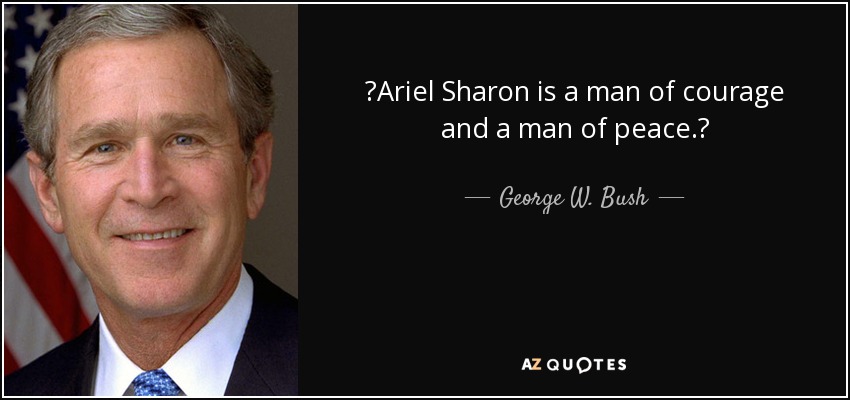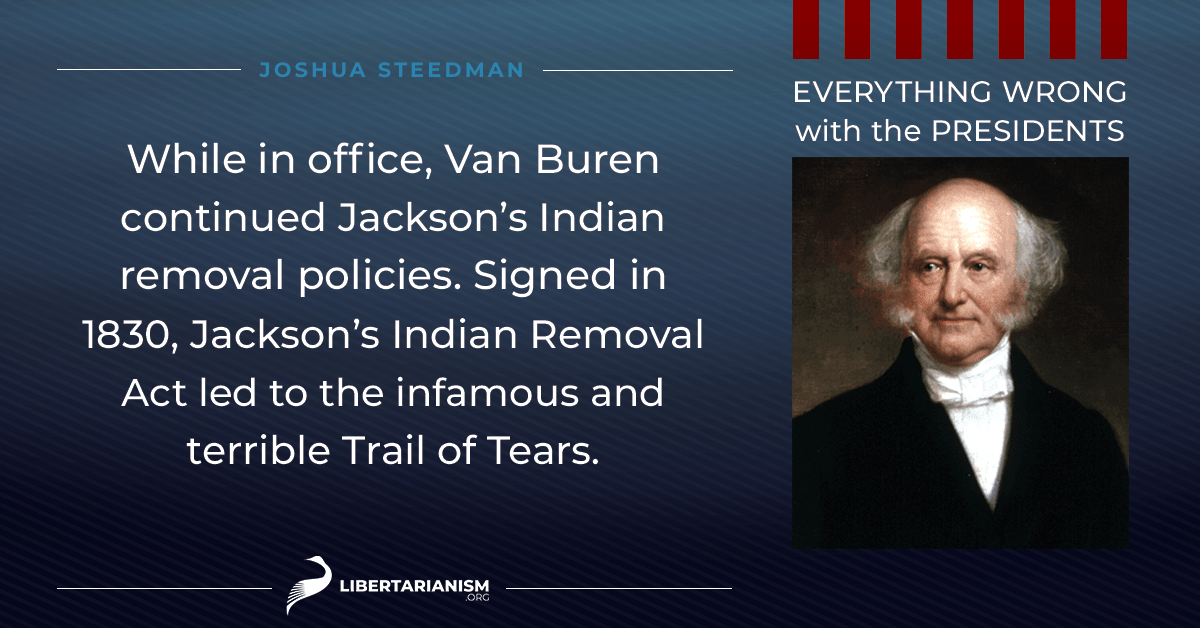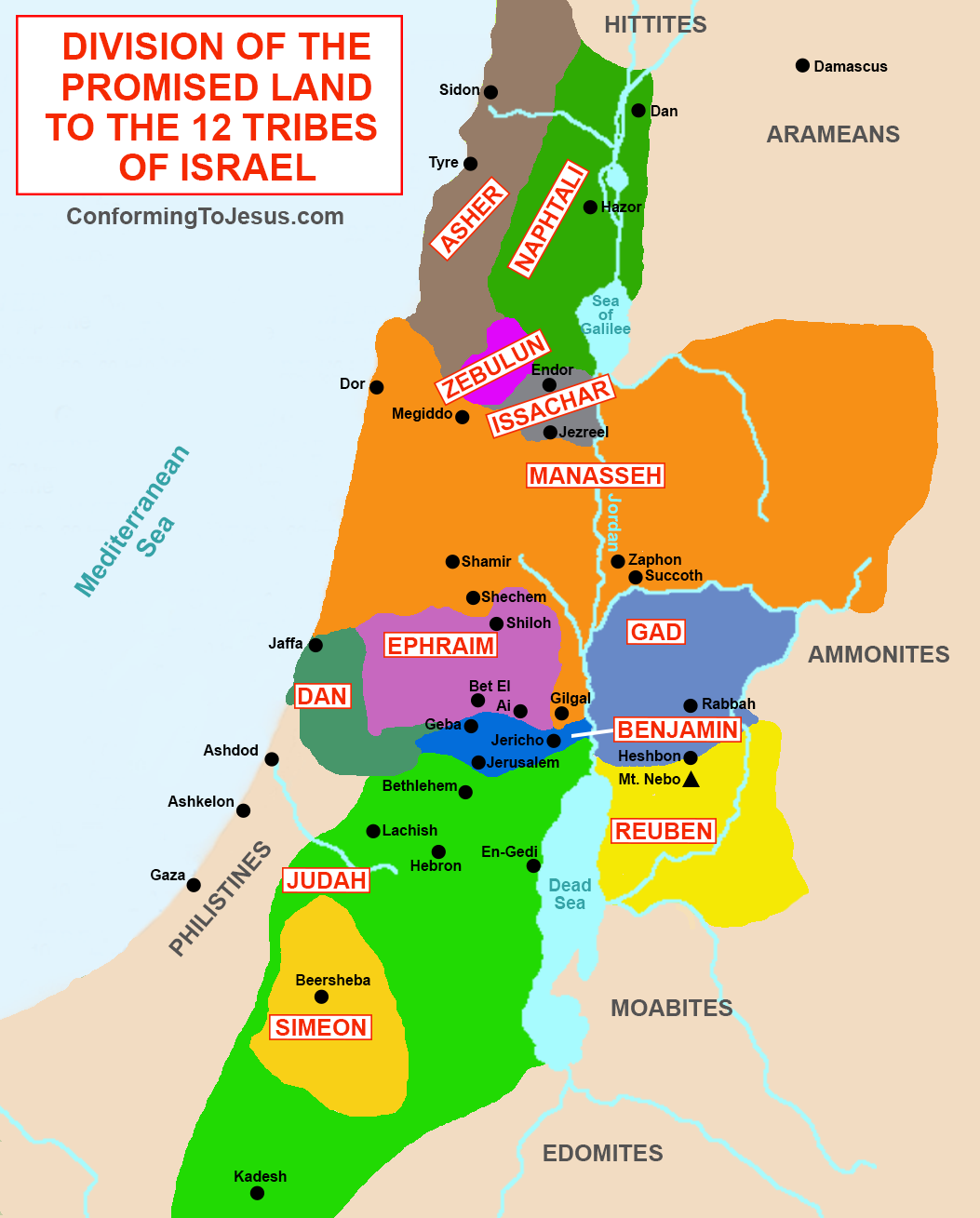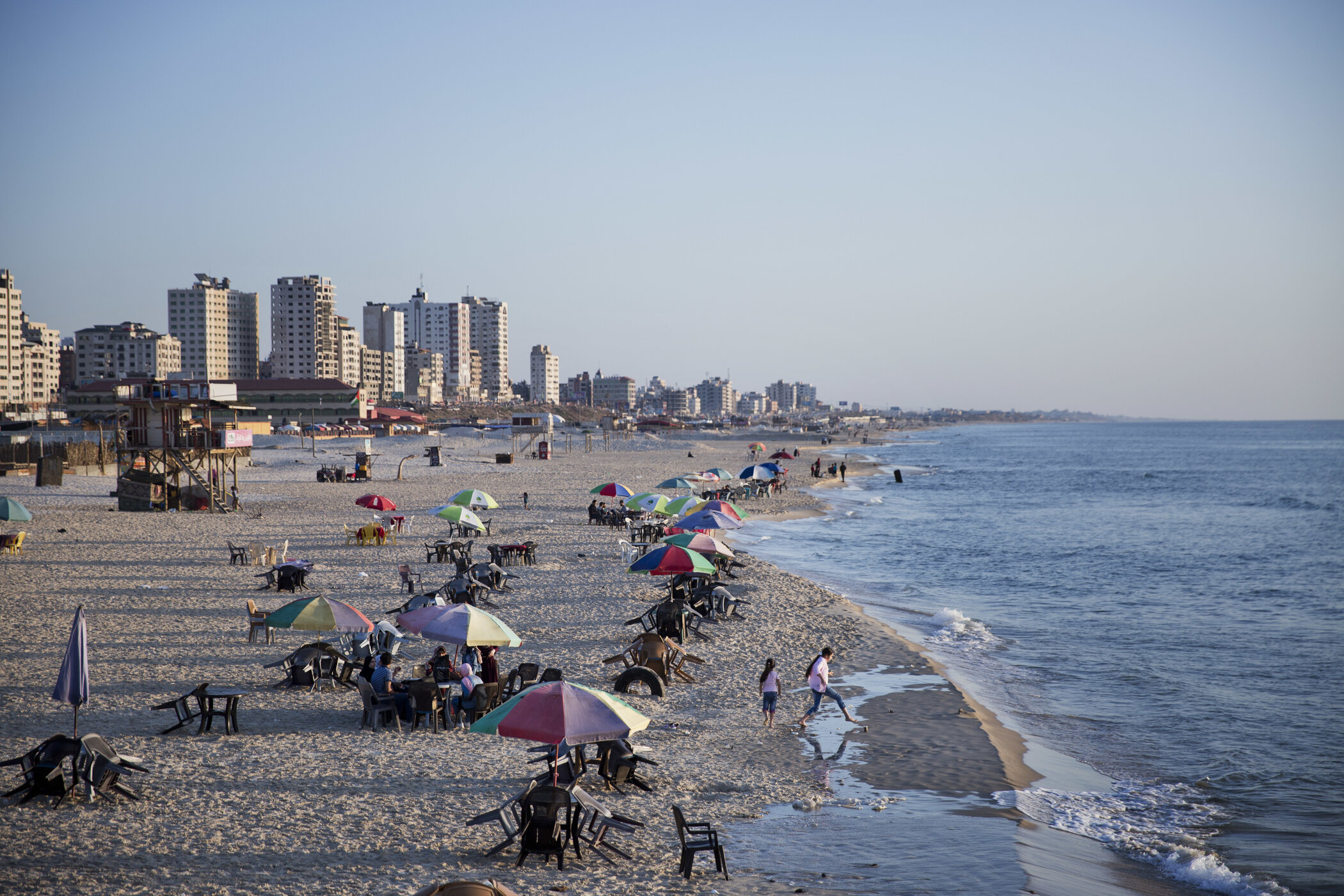Israel’s Prime Minister Benjamin Netanyahu is vowing to unleash more airstrikes in Gaza, where dozens have been killed in clashes between Israeli forces and Hamas commanders. As Eric Sorensen reports, fears are growing that decades-long tensions between Israeli’s and Palestinians over Jerusalem could soon erupt into war. Plus, we’re getting a clearer picture on what life is like for Palestinians living in Jerusalem, as deadly violence shakes one of the holiest cities in the world. Nusa Musleh, a freelance reporter in Jerusalem, has the stories of citizens caught in the conflict. Israel killed a string of senior Hamas military figures Wednesday and pounded three multistory towers as it hammered the Gaza Strip with airstrikes. Militants in the territory fired rocket barrages back into Israeli positions. Dozens have died in the worst violence since a 2014 war, with no resolution in sight. The fighting has taken on many hallmarks of that devastating 50-day conflict between Israel and Hamas, but with a startling new factor: a burst of fury from Israel’s Palestinian citizens in support of those living in the territories as well as counter violence by Jewish Israelis.
BACKSTORY OF HAMAS RULE OF GAZA
The Rise of Hamas in Gaza
By Jeremy R. Hammond | Jan 20, 2010 | Essays, Palestine, US | 0 |

When the Hamas charter was first published in 1988, the New York Times observed that the group’s formation represented “the first serious split of the nine-month-old Palestinian uprising in the Israeli-occupied territories”. Hamas was “critical of the Palestine Liberation Organization” and “not only poses a threat to the secular, P.L.O.-oriented leadership of the uprising, but has also complicated the efforts of several West Bank leaders to press Yasir Arafat and the P.L.O. leadership abroad to capitalize on their political gains by offering to come to terms with Israel.”
Despite having become “a major force in the Gaza Strip”, the Times noted that “Israeli authorities have taken no direct action against Hamas” and that “Many Palestinians maintain that the fundamentalists are being tolerated by the Israeli security forces in hopes of splitting the uprising, noting that such tactics have been used in the past in the Gaza Strip to set Islamic fundamentalists against Palestinian leftists.”[1] Israel had reportedly gone even further and directly funded the Hamas parent organization, which was legally registered in Israel a decade before the Hamas charter was announced.[2]
Hamas would go on to deserve its reputation among the international community as a terrorist organization. In April 1994, Hamas claimed responsibility for the first Palestinian suicide bombing in retaliation for the murder of 29 Muslims in a mosque in Hebron by Baruch Goldstein, a Jewish settler armed with an assault rifle.[3]
Israel’s initial support and encouragement for Hamas is widely acknowledged among analysts. This may seem at first like an oddity, but there is a quite logical explanation. The main problem facing Israel was the threat of peace posed by a PLO increasingly recognized by the international community as having rejected the tactic of terrorism in favor of engagement in the political process. Israel was dealing with a PLO that had dangerously accepted the international consensus on a two-state solution for the Israeli-Palestinian conflict. This consensus is based on the requirement of international law that Israel withdraw from the territories it occupied during the 1967 war, a principle reflected in U.N. Security Council resolution 242 and numerous subsequent resolutions. In Israeli policymakers’ political calculus, the ultimate threat was not that of terrorism but of the possibility of having to give up the land it wanted as part of Israel in order for a viable Palestinian to be established.
That this has been the political calculus of Israeli leaders is well evidenced by its policies and their predictable consequences, and is perhaps the only logical explanation for Israeli actions. Israel’s continued occupation, oppression, and violence towards the Palestinians have served to escalate the threat of terrorism, but this is a price Israeli leaders are willing to pay. Indeed, the threat of terrorism has often served as a pretext for carrying out policies furthering political goals that would not be politically feasible absent that threat.
That its policies served to increase the threat of terrorism was well recognized among its leadership. In October 2003, for instance, Israel’s chief of staff of the military criticized the policies of Prime Minister Ariel Sharon, pointing out that they served to increase hatred of Israel and strengthen terrorist organizations.[4] The next month, four former chiefs of Israel’s Shin Bet security service similarly spoke out, saying Israel was headed in the direction of “catastrophe” and would destroy itself if it continued to take steps “that are contrary to the aspiration for peace”, such as the continued oppression of Palestinians under Israeli occupation. “We must admit that there is another side,” said Avraham Shalom, Shin Bet director from 1980 to 1986, “that it has feelings and that it is suffering, and that we are behaving disgracefully.”[5]
But the policies continued, with Israel often acting violently to provoke a violent response, including its use of extrajudicial killings. On March 22, 2004, for example, Israel assassinated Hamas founder Sheik Ahmed Yassin, a quadriplegic. “I could not recognize the sheik, only his wheelchair,” said one witness to the attack. Palestinian Prime Minister Ahmed Qurei called it “a crazy and very dangerous act” that “opens the door wide to chaos” because “Yassin is known for his moderation, and he was controlling Hamas”.[6] Analysts predicted that the action, rather than lessen the threat of terrorism, would “likely lead to increased violence against Israel in the form of retaliation attacks”. Criticism of the attack included members of Sharon’s own government, including Interior Minister Avraham Poraz, who made similar observations.
The Sharon “Disengagement” Plan
The fact that it was predicted to have the opposite effect certainly casts doubt on Israel’s claimed motive of wanting to mitigate the threat of terrorism by eliminating the head of a terrorist organization. Furthermore, other predicted consequences point to a much different rationale for the decision. Some experts argued the assassination was in part “intended to build domestic support for a planned Israeli withdrawal from Gaza and part of the West Bank.” But more importantly, the attack had “devastated prospects for a peace settlement in the Middle East”, which was also precisely the outcome that the planned withdrawal from Gaza was intended to produce.[7]
That the actual goal was to undermine prospects for peace is underscored by the fact that Yassin had just a short time prior said “that Hamas could accept a Palestinian state in the West Bank and Gaza Strip”, with Hamas offering a long-term truce in exchange for withdrawal from the territories, “a major shift in policy from Hamas” towards acceptance of the international consensus on a two-state solution.[8]
At the time of Arafat’s death later that year, Israel had been openly talking about withdrawing from Gaza not as a means to implement steps towards a negotiated peace settlement, but as a means to derail it. This purpose was typically obfuscated in U.S. media coverage of the development, which tended to characterize it as a move intended as a gesture of goodwill done to advance the peace process. But the true nature of Sharon’s “disengagement” plan did occasionally slip through the cracks. The Washington Post reported, for instance, that according to Sharon’s “top aides”, “once Gaza was evacuated, the whole [peace] process would go in a deep freeze for many years – leaving Israel in control of the West Bank, where its most populated and richest settlements were located.”[9]
In contrast to Western accounts, the Sharon government itself offered few pretenses about the true motivations behind the plan. Israel announced that while the withdrawal took place, it would at the same time expand settlements in the West Bank. Israel additionally declared that large portions of the West Bank would “remain part of the State of Israel” as the illegal construction of what was effectively an annexation wall continued. Justice Minister Tzipi Livni, while insisting that the wall was intended to prevent terrorist attacks, later admitted that “One does not have to be a genius to see that the fence will have implications for the future border.” While she characterized these “implications” as merely incidental, this is hardly plausible in light of Israel’s policy of four decades of occupation and illegal settlement of Palestinian territory.[10]
But Israel needed political cover for its plan to consolidate its control over land in the West Bank and to disengage from any kind of effort towards a negotiated settlement. This was where the withdrawal from Gaza would come in. It was part of a little-disguised public relations campaign. Once implemented, Israel declared that although it would “monitor and supervise the outer envelope on land, will have exclusive control of the Gaza airspace, and will continue its military activity along the Gaza Strip’s coastline” and would “continue to maintain military presence along the border between the Gaza Strip and Egypt”, there would be “no basis to the claim that the Strip is occupied land”.[11] The move would also offer the U.S. government political cover so Israel could gain its much-needed support for the “disengagement” plan…..

In April, U.S. President George W. Bush sent a letter to Sharon that welcomed the “disengagement plan” and gave a green light for the policy of settlement expansion and construction of the wall. While paying lip service to the notion of a Palestinian state, it effectively endorsed the Israeli policy of prejudicing the outcome of any future negotiated peace settlement.[15]
A month later, U.S. Ambassador to Israel Dan Kurtzer said in an interview with Israeli media that it was U.S. policy that “Israeli major populations areas [in the West Bank] in our view should remain within the State of Israel.” This is the policy, he said, that had been communicated in the letter from President George W. Bush to Sharon. So as to leave no uncertainty, Kurtzer reiterated that “U.S. policy is the support that the President has given for the retention by Israel of major Israeli population centers as an outcome of negotiations. It is very, very clear to both the United States and Israel what this means.”[16]
Kurtzer’s remarks caused “a diplomatic furor”, forcing Secretary of State Condoleezza Rice to contradict it by saying that Israel’s settlement expansion was “at odds with American policy.” The New York Times correctly observed that Sharon “has justified his plan” to withdraw from Gaza “on the basis of his belief that Washington will support Israel’s intention to keep its main settlement blocks” in the occupied territory, including East Jerusalem, but described the contradiction between rhetoric and action as “Diplomatic ambiguities”.[17]
Hamas’s Democratic Gains
It was under these circumstances that the Hamas began most dramatically to evolve away from a terrorist organization bent on Israel’s destruction towards a legitimate political force seeking a negotiated settlement. While the Palestinian Authority (PA) under President Mahmoud Abbas had increasingly become seen as corrupt and ineffectual, Hamas had increasingly become seen as a viable alternative that would clean up the corruption and more faithfully defend the rights of Palestinians as it pursued the goal of statehood, such as by refusing to recognize that the unilateral declaration of the establishment of state of Israel and subsequent ethnic cleansing of Palestine in 1948 had any legitimacy, refusing to renounce the right to armed resistance, and insisting on the right recognized under international law of Palestinian refugees to return to their homeland.
Hamas stormed the political arena in force in 2005. In January of that year, prior to scheduled municipal elections, a report from the U.S. State Department observed that Hamas was “Neck and Neck” with Fatah, the party under the leadership of President Abbas, with “a majority of both [Fatah] and Hamas supporters” backing “a continuation of the ceasefire, ongoing talks with Israel, and a two-state solution.” It noted that Palestinians “tend to see Hamas as more qualified to clean up corruption, resist occupation, and uphold societal values”, and that the “lack of hope in the peace process may also contribute to support for Hamas.”[23] In other words, by rejecting the two-state solution, Israel was effectively helping, once again, to empower Hamas. A little over a week later, Hamas won an overwhelming victory in the municipal elections, gaining 75 out of 118 seats in 10 local councils, and with Fatah winning only 39 seats.[24]
Hamas continued to gain council seats in further municipal elections in May. But rather than encouraging Hamas’s engagement in the political process, Israel continued to seek to isolate the group. Instead of encouraging Hamas to moderate its behavior, Israel continued to attempt to provoke the group into a violent response. Israel sent the message to Hamas that its steps towards moderation and political engagement would bear no fruit. When Hamas cleaned the streets, Israeli bulldozers and tanks destroyed them, and when Hamas erected streetlights, Israeli soldiers shot them out.[25]
A further round of municipal elections were held in the West Bank in September, with Hamas again performing well, receiving nearly a third of the votes.[26] As the parliamentary election scheduled for January 25, 2006 drew near, Hamas published a manifesto that Western news agencies found remarkable for the absence of mention of any goal to eliminate Israel. Hamas candidate Gazi Hamad said it reflected the group’s position of seeking a Palestinian state along the 1967 borders. He said Hamas would not recognize that Israel had a “right to exist”, but that it was seeking to shift strategies away from armed struggle to engagement in the political process. Palestinian cabinet minister Ghassan Khatib said, “Having Hamas inside the system is a positive development whereby they have to abide by the rules of the majority and respect the arguments of the administration they are part of, which includes a state built on 1967 borders. It will take time but Hamas will no longer have their own militia. It will be solely a political force.”[27]
Israel and the U.S., however, had other plans and other goals. Israel initially announced that it would prevent Palestinians from casting ballots in occupied East Jerusalem, but then changed its position. Under the new rules dictated by the occupying power, Palestinians would be allowed to vote, but Hamas candidates couldn’t appear on the ballot or campaign there. Three candidates who tried to do so were arrested.[28] The U.S. spent $1.9 million through a program run by the U.S. Agency for International Development (USAID) in an effort to bolster Fatah, a violation of the Palestinian election law. James Bever, the USAID mission director for the Palestinian territories described the program without irony as an effort “to support the democratic process”.[29]
When the results of the election were in, despite U.S. efforts to sway the vote, Hamas had won 76 of 132 seats in the legislature. The New York Times observed that the U.S. and European Union have “equivocated”, on one hand having “pressed Israel to allow Hamas to participate in the elections” while on the other having “threatened to cut aid and ties to a Hamas-dominated Palestinian Authority.” But, the Times added, “Hamas’s participation in Palestinian politics is not necessarily a bad thing, and resisting it is very likely to do more harm than good. As a political party, Hamas revealed itself to be disciplined, pragmatic and surprisingly flexible. It fielded well-regarded candidates, including doctors and academics. In some cases, Hamas aligned itself with independents once affiliated with the secular Fatah party. And although the Hamas charter calls for the destruction of Israel and the liberation of Palestine ‘from the river to the sea,’ the party’s campaign manifesto made no mention of these goals.” The editorial suggested the U.S. should engage Hamas to encourage this evolution and that refusing to do so, “will only further legitimize the party” and “could even give rise to violence.” In addition, “cutting off aid to the Palestinian Authority, which is already in a fiscal crisis and enormously dependent on foreign aid, could bankrupt it, further destabilizing the region.”[30]
Fully conscious of the predicted consequences, Israel responded to the elections by announcing that it would not negotiate with Palestinians on a peaceful settlement. “These results have definitely brought an end to the peace process,” observed former Israeli Foreign Minister Shlomo Ben-Ami.[31] Acting Prime Minister Ehud Olmert said, “The state of Israel will not negotiate with a Palestinian administration if even part of it is an armed terrorist organization calling for the destruction of the state of Israel.”[32]
https://www.foreignpolicyjournal.com/2010/01/20/the-rise-of-hamas-in-gaza/
AMERICAN INVENTION OF THE TRAIL OF TEAR SPONSORED BY THE OFFICE OF THE PRESIDENT
Americans may not recognize the association of the “Trail of Tears” with the plight of the Palestinians. David L. Kindder & Noah D. Oppenheim in the Intellectual Devotional American History : Revive Your Mind, Complete Your Education and Converse Confidently about Our Nation’s Past (2007) gives a compact view of American history. Kindder & Oppenheim concise explanation of the Trail of Tears and the Presidential approval required to make it possible.

In 1838, President Martin van Buren (1782-1862) forced 16,000 members of the Cherokee tribe to leave their ancestral homelands in Georgia and relocate to Oklahoma. The Cherokees’ unwilling journey westward—more than 1,200 miles on foot—is often referred to as the Trail of Tears. During the trip, thousands of Cherokees died of dysentery, road accidents, and exhaustion.

Before the arrival of European settlers, the Cherokees were one of the most powerful tribes in the southeast. At the beginning of the nineteenth century, more than 20,000 Cherokees lived in present-day Georgia, Tennessee, and Alabama.
In the early 1800s, however, the federal government and the state of Georgia decided that the Cherokees should be “relocated” to make room for more white settlers. Cherokee chiefs refused to leave and declared themselves an independent nation. The Supreme Court sided with the Cherokees, but President Andrew Jackson famously dismissed the court’s opinion declaring, “Chief Justice John Marshall has made his decision; let him enforce it now if he can.”

The final order to evacuate was issued by Van Buren, Jackson’s successor, in May 1838. About 7,000 soldiers were dispatched to Cherokee territory that spring to round up the tribe at gunpoint, despite vociferous protests from many Americans who sympathized with the tribe’s plight. The brutal match west would kill between 2,000 and 8,000 Cherokees.
The tribe had no connections to Oklahoma, which the federal government had designated as Indian Territory, but those who survived were eventually able to adapt to their new surroundings. According to the 2000 census, the Cherokees are now the largest tribe in the United States, with about 730,000 members.
One reason for the sudden federal interest in the Cherokees was the discovery of gold near tribal lands in Dahlonega, Georgia, in 1829, which set off the nation’s first gold rush.

In the case of Israel vs the Palestinians, its not gold but land and the desire to recreate the Biblical “Land of Israel.” And with unquestioning Presidential collusion from the United States, the Palestinians can be ethnically cleansed from the land. If the American public objects, they will be reminded of the Holocaust and see the rightness in the situation.

Steve Inskeep in Jacksonland (2015) enhances Kidder & Openheim’s narrative. In a review in Book Page (June 2015) Roger Bishop writes that Andrew Jackson, acting as both a government employee and a private citizen, was more responsible than any other single person for creating the region we call the Deep South. As president, his first significant initiative was a proposal to remove all Indians from the area. But, long before, while serving as a major general, he wrote, “The object of the government is to bring into market this land and have it populated.” Native Americans were removed by armies, acts, treaties and laws.
At the same time, Jackson was also deeply involved in real estate transactions on land that he had captured as a general. While on the military payroll, he bought and operated slave plantations and, in collaboration with friends, relatives and business associates, opened land to white settlers. The names of Jackson and others close to him appear on the purchase records for at least 45,000 acres sold in he Tennessee Valley from 1818 onward. The evidence indicates that Jackson was able to align the nation’s national security affairs with his own interest in land development.

The Cherokee Nation, led by the extraordinary John Ross, used every approach available to remain on their land. Ross’ father was a descendant of Scott-Irish traders and his mother was one-fourth Cherokee. He could have passed as white, but something drew him closer to his Native American identity. The epic struggle between these two strong personalities and their cultures is at the heart of Steve Inskeep’s fast-paced Jacksonland: President Andrew Jackson, Cherokee Chief John Ross, and a Great American Land Grab.
In his second book, Inskeep, long-time NPR Morning Edition co-host, award-winning investigative journalist, and author of Instant City, gives events of the 1820s and ‘30s the immediacy of today’s headlines. 1828 saw the elections of Andrew Jackson as president and John Ross as tribal chief of the Cherokee. Once allies, the men clashed violently over land belonging to the Five Civilized Tribes, and in their struggle, which involved civil disobedience by women as well as men, Inskeep sees the groundwork of later social and political movements.
Inskeep, co-host of NPR’s “Morning Edition,” details the increasingly strained relations between the two sides. Ross was a keen strategist while Jackson was a frontier leader who made his own rules and was always governed by the will to win.
Jackson left office in 1837, but his political influence remained for another generation [including President Donald J. Trump in the 21st century]. Ross moved to the West with the last group of Cherokees in 1838. At his death in 1866, Cherokees were negotiating another treaty that required to give up more of the land that was to have been theirs forever.
Like in the Cherokees’ banishment from their lands, race matters. It seems that the race dynamic in Israel-Palestine is that the Israelis are white; and the Palestinians are black. The racial dynamics in Israel is that any Israeli whose ancestry comes from North Africa or has a North African surname is considered black, no matter his or her complexion. The Anasazi or European Jew is the preferred face of Israel, not the Mizzen, or Asiatic Jew, or for that matter the Falasha or Ethiopian Jew.
WORLD
Liberal American Attitudes Are Starting To Shift On Israelis And Palestinians
May 21, 20214:25 PM ET Heard on All Things Considered
AUDIE CORNISH FacebookTwitter LISTEN· 4:154-Minute Listen Add to PLAYLIST
- Download
- Embed
- Transcript
NPR’s Audie Cornish chats with editor-at-large of Jewish Currents Peter Beinart about Americans’ changing opinions on Israelis and Palestinians. https://www.npr.org/2021/05/21/999241551/liberal-american-attitudes-are-starting-to-shift-on-israelis-and-palestinians
Mike Pence is blaming violence in Israel on Biden. But what happened to all the progress Jared Kushner supposedly made during Trump’s presidency?
NATIONAL SECURITY
National Security Council Member Talks U.S. Role In Israel And Middle East
May 21, 20214:13 PM ET Heard on All Things Considered
AUDIE CORNISH Facebook Twitter

VINCENT ACOVINO LISTEN· 5:275-Minute Listen Add to PLAYLIST
- Download
- Embed
- Transcript
NPR’s Audie Cornish speaks with Brett McGurk from the National Security Council about the Biden administration’s role in Israel and the Middle East. https://www.npr.org/2021/05/21/999241508/national-security-council-member-talks-u-s-role-in-israel-and-middle-east
President Biden delivers remarks on a cease-fire that was just announced between Israel and Hamas, and discusses the diplomatic efforts that went into it. For access to live and exclusive video from CNBC subscribe to CNBC PRO: https://cnb.cx/2NGeIvi President Joe Biden told Israeli Prime Minister Benjamin Netanyahu in a phone call Wednesday that he expects “a significant de-escalation today on the path to a ceasefire,” the White House said. It was their fourth conversation since the violence erupted between Israel and Hamas nine days earlier. Israel’s strikes on the Gaza Strip have led to at least 227 Palestinian deaths including 64 children and 38 women, according to authorities there. Israel has said more than 3,400 rockets have bombarded its cities and towns. At least 12 people have died in Israel. “The President conveyed to the Prime Minister that he expected a significant de-escalation today on the path to a ceasefire,” according to the White House readout of the call. In a statement after speaking with Biden, Netanyahu said he is “determined to continue in this operation until its objective is achieved — to bring back the quiet and security to…citizens of Israel,” according to The Jerusalem Post and other Israeli media outlets. The latest round of fighting has marked the worst outbreak of violence since the war between Israel and Hamas in 2014. Biden faces growing pressure from his own party to do more to end the violence. More than 130 Democratic members of the U.S. House of Representatives on Wednesday signed a letter “strenuously” urging the president to “boldly lead and take decisive action to end the violence” by pressing both sides to negotiate a cease-fire. “Too many people have already died. More will unnecessarily perish if America does not act with the immediacy this violence demands,” according to the letter signed by House Democrats. In Tel Aviv, Netanyahu briefed foreign diplomats and ambassadors on the worsening violence and reiterated previous claims that the Israeli military tries “to target those who target us with great precision.” “There is no army in the world that does more than the Israeli army, in the Israeli security services, in Israeli intelligence to prevent collateral damage,” Netanyahu said. Netanyahu added that Hamas “is embedded deeply in civilian areas” in order to use civilians as human shields. Diplomatic representatives from the U.S., European Union and ambassadors from Russia, China, India, Germany, Austria, Australia, Japan, Brazil, Canada and Italy attended the briefing, according to Israel’s Foreign Ministry. The dramatic escalation of tensions followed protests over the potential eviction of Palestinian families from a neighborhood in east Jerusalem by Israel’s Supreme Court. In Jerusalem on May 7, Israeli security forces clashed with stone-throwing Palestinians near Al-Aqsa Mosque, Islam’s third holiest site in advance of a court hearing three days later in the eviction case. With tensions rising, the high court delayed the hearing in the case brought by right-wing Israelis
Here’s What Tourists Might See If They Were Allowed To Visit Gaza
August 8, 2019 8:37 PM ET

DANIEL ESTRIN Instagram Twitter
ABU BAKR BASHIR LISTEN· 7:497-Minute Listen
- Download
- Embed

Families and friends enjoy their time on a Gaza City beach. Israel allows in international aid workers, journalists and diplomats, but tourists are prohibited.Khalil Hamra/AP Images for NPR
It’s not easy to find a tour guide in Gaza. Even clerks at the local Tourism Ministry, a vestige of the 1990s that remarkably still exists, struggle to recommend professional guides, before suggesting a man who hasn’t led tourists around for 20 years. https://www.npr.org/2019/08/08/748661511/heres-what-tourists-might-see-if-they-were-allowed-to-visit-gaza

Khalil Hamra/AP Images for NPR

Khalil Hamra/AP Images for NPR

Khalil Hamra/AP Images for NPR

Khalil Hamra/AP Images for NPR

Khalil Hamra/AP Images for NPR

Daniel Estrin/NPR

Moshe Milner/GPO via Getty Images

Khalil Hamra/AP Images for NPR

Daniel Estrin/NPR

Daniel Estrin/NPR

Khalil Hamra/AP Images for NPR

Khalil Hamra/AP Images for NPR

Daniel Estrin/NPR

Khalil Hamra/AP Images for NPR
MIDDLE EAST
What Gaza Looked Like On The 1st Day Of Cease-Fire
May 21, 20214:25 PM ET Heard on All Things Considered

DANIEL ESTRIN Instagram Twitter LISTEN· 4:174-Minute Listen Add to PLAYLIST
- Download
- Embed
- Transcript
The first day of calm after 11 days of Israeli airstrikes left Gazans surveying the damage and reuniting with family. Gazan officials say the strikes killed at least 240 people. https://www.npr.org/2021/05/21/999241530/what-gaza-looked-like-on-the-1st-day-of-cease-fire
As tensions escalate between Israel and Palestine, “Start Your Day” hosts Sharon Reed and Mike Hill admit that they are still doing their part to learn more. Marc Lamont Hill, host of “Black News Tonight,” joins the show to explain the conflict between the two regions and how U.S. officials are responding to it. He says the Biden Administration has a “do-nothing approach.” Citing former President Donald Trump’s actions in Israel, Hill says it is now difficult for the two to negotiate because of an imbalance of power. He also notes that President Biden did not undo any efforts put in place by Trump’s administration. Hill also says the United States needs to stop protecting Israel from international condemnation. Citing that antisemitism is a real threat worldwide, Hill says critique on the state of Israel has to be disconnected from antisemitism.
In Depth: Q & A on Israel’s Pullout from Gaza
July 29, 2005 5:06 PM ET


Israel has pledged to begin pulling settlers and troops out of the Gaza Strip on Aug. 17.View a Detailed Gaza Map
(Source: The Washington Institute for Near East Policy)Region Map: Geoff Gaudreault, NPR

Palestinian women in a cart pass the entrance to the Jewish settlement of Shirat Hayam in the Gaza Strip, Feb. 3, 2004.Nir Elias/Reuters/Corbis
COMMENTS ON THE PULLOUT:
Israel’s plan to withdraw from the Gaza Strip beginning Aug. 17 has been controversial within Israel and raises huge challenges for Palestinian leaders. Some of the 8,000 Jewish settlers who live in Gaza have vowed not to leave their homes, defying Prime Minister Ariel Sharon’s disengagement plan. There’s also much at stake for Palestinian President Mahmoud Abbas, who must show he can control security in Gaza and exert leadership over various Palestinian factions.
Mideast Correspondent Peter Kenyon answers questions about the pullout.
Ariel Sharon

Israeli Prime Minister Ariel Sharon calls the Gaza withdrawal a “painful but necessary” step. (February 2005)
Hear Sharon
LISTEN Add to PLAYLIST
- Embed
Mahmoud Abbas

Palestinian President Mahmoud Abbas, speaking at a White House appearance with President Bush, says the Palestinians are ready to coordinate the withdrawal from Gaza with the Israelis, but that a pullout from the West Bank must be part of the equation. (May 26, 2005)
Hear Abbas (Voice of Translator)
LISTEN· 0:23Add toPLAYLIST
- Embed
President Bush

President Bush, at an appearance with Abbas at the White House, cites the Gaza pullout in the context of the “road map,” a plan backed by the United States, United Nations, European Union and Russia to resume the Mideast peace process. (May 26, 2005)
Hear President Bush
LISTEN· 0:32 Add to PLAYLIST
- Embed
Jewish Settler Rivka Namir
Gaza settler Rivka Namir, a mother of nine, says Gaza settlers had Israel’s support, but now she feels betrayed by the planned pullout. (April 2005)
Hear Namir
Add to PLAYLIST Toggle more options
Gaza Editor Ghazi Hamad
Ghazi Hamad, editor-in-chief of the Islamist weekly al-Rissalah based in Gaza, says the Israeli withdrawal from Gaza is not enough to help Abbas shut down the militants. Sharon must also pull Israelis out of the occupied West Bank, Hamad says. (June 2005)
Hear Hamad
Add toPLAYLISTToggle more options
Gaza by the Numbers
Area: 140 square miles
Palestinian Population: 1.3 million
Israeli Settlers: 8,000-9,000
Number of Settlements: 21
Estimated Cost of Israeli Withdrawal: Approximately $2 billion
Settlers’ Compensation: Each of Gaza’s 1,700 Israeli families reportedly will receive $200,000 to $400,000 plus two years of rent while they decide on permanent housing.
Why is Israel pulling out of the Gaza Strip?
The decision was made a year or so ago, during the final stage of Yasser Arafat’s leadership of the Palestinian Authority. The Israeli government decided that rather than make another attempt to negotiate with Arafat it would unilaterally withdraw the Jewish settlements from the Gaza Strip, as well as four isolated settlements in the northern West Bank. The stated rationale was that this would make it easier for Israel to hold onto territory in the West Bank, where the largest Jewish settlements are located. Previous leaders had offered such evacuations only as part of a comprehensive “land-for-peace” deal with the Palestinians. After Arafat’s death and the rise of Mahmoud Abbas, Israeli Prime Minister Ariel Sharon continued to press ahead with his unilateral vision. https://www.npr.org/2005/07/29/4775357/in-depth-q-a-on-israels-pullout-from-gaza